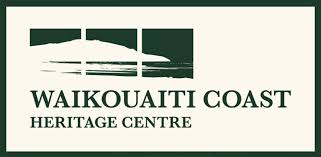Stories from the archives
Local Stories
by Bev Medlin
There is something deliciously familiar and strangely comforting about our authentic kitchen here at the museum.
Yes, in another life it was an austere bank built by that great Scottish born New Zealand architect Robert Lawson in 1869. However, he also designed the building for that other great purpose, the practical home, and for, in this instance, the bank manager and his family. Home and hearth is where the heart is, and where better to find that welcoming hearth than in the kitchen. At the back of the museum, the last door on the right is that all important room. Centre stage sits a wonderful old black Shacklock coal range. I go a tiny bit weak at the knees over these. I cooked on one for almost seven years as a young married mum. I remember the sweet smell of burning wood and the cosy warmth it created, especially appreciated during winter. I was living in Hanmer Springs, famous for its high country skiing as much as the hot pools. The Shacklock Orion cast iron coal ranges were produced here in Dunedin by English born Henry Ely Shacklock in 1873. He designed them especially for the New Zealand lignite coal. Henry Shacklock named his design Orion to reflect his abiding interest in astronomy. He famously introduced appealing new features such as curves and angles to enhance aesthetics. He improved its strength. Fire doors would stay open by themselves horizontally. The chimney and flue damper could be removed for cleaning. He also made the door with varying degrees of thickness in order to distribute the heat evenly. By late 1880's, his Orion range had been expanded to offer different models, including double ovens and a feature he called 'destructor' firebox, which was marketed as a safe, hygienic method of disposing of kitchen waste. Tragically, after suffering from prolonged bouts of depression, Henry Ely Shacklock hanged himself in his Dunedin home December 17th 1902. He was 63. The company went on to produce New Zealand's first electric stove in 1925. In 1955, Auckland company Fisher and Paykel Ltd acquired H. E. Shacklock Ltd. Also on display is an electric stove, which is a Moffitt Ltd. It has a 230 volt oven with 3 hobs and temperature gauge. This item was donated in 1987 by Mrs A. Hagan. Truthfully, there is a plethora of treasures big and small in our domestic household collection here on display, and this is only one room in this remarkable and historically significant building. I promise you won't be bored. Our summer hours are 2-4pm Wednesdays and Thursdays, and 10am-4pm Friday. Saturday and Sundays. Waikouaiti has seen its share of industrious and fascinating characters that have left their mark on the district. My favourite remains the indomitable, somewhat controversial and larger than life protagonist that is John Jones. A self made man and legend in his own life time. Born in modest circumstances in Sydney around 1808, by 1844 he was the settlement's primary landlord, employer and merchant. There are several fine books on him. I can recommend one in particular, by his great granddaughter Diana Harris, titled Johnny Jones, A Colonial Saga. Through canny negotiations with tangatawhenua such as Tuhawaiki, the paramount chief of the Kai Tahu tribe, Jones set about taking ownership of the entire South Island. However, he had his ambitions deflated and bought back down to earth by the British Crown. As part of the signing of the 1840 Treaty, an immediate stop was put on flagrant buying up of land without the Crown's permission. Jones was denied most of his earlier purchases. He fought bitter litigation through the courts for years but was largely thwarted, with the Crown conceding some of the titles. His influence in the district continued after his death in 1869 and even into present day. For example, though not a profoundly religious man himself, he never the less gave generously to all the denominations. He gifted the land and paid for the construction of the beautiful Anglican Parish of St John, built in 1858 (significantly today, the oldest functioning parish in Otago and Southland). Money and resources bequeathed to the parish in his will is what keeps its doors open to the community, and almost 150 years after his passing. Pretty impressive. Here at the museum, as you might expect, we have a few interesting items associated with the great man. Some are touching and distinctly personal. On display in the bank chamber is an exquisite nightgown worn by his granddaughter Beatrice Victoria Robinson Jones. Next to this item and for another granddaughter, Florence Jones, we have pieces of beautiful silver cutlery manufactured in Edinburgh called The Royal Collection. Touchingly monogrammed JJ to FJ, it was commissioned as a wedding gift. We have an additional 20 pieces, which returned from Toitu Museum in Dunedin last year. They await the opening of the exciting new building for display.
2017-02-01
Reproduced with thanks from:
